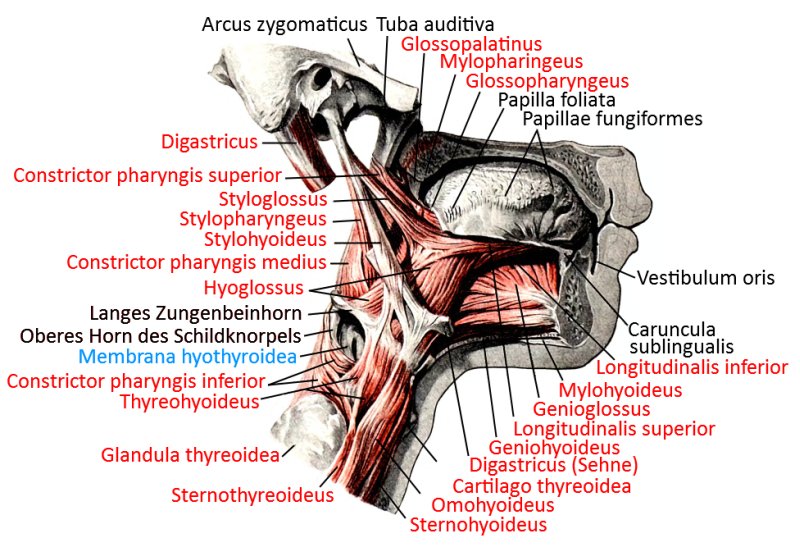yogabook / bones / cranium/skull
The skull (lat. cranium) refers to the bones of the head. It consists of 22 – 30 bones (depending on age, some grow together) and is divided into the part that surrounds the brain (neurocranium) and the facial skull (viscerocranium).
The neurocranium consists mainly of the following bones:
- one occipital bone(Os occipitale)
- Parietal bone (Os parietale, left and right)
- Temporal bone (Os temporale, left and right)
- Sphenoid bone (Os sphenoidale)
- Parts of the frontal bone (Os frontale)
- Ethmoid bone (Os ethmoidale)
The viscerocranium consists of:
- Dividing the frontal bone
- Zygomatic bone (Os zygomaticum, left and right)
- Upper jaw (maxilla), seen exactly in pairs
- Intermaxillary bone (Os incisivum, left and right, fuses with the upper jaw before birth)
- Lower jaw (mandible)
- Nasal bone (Os nasale, left and right)
- Inferior turbinate bone (Os conchale inferius, left and right)
- Lacrimal bone (Os lacrimale, left and right)
- Palatine bone (Os palatinum, left and right)
- Plowshare leg (the vomer)
The skull is held and moved by many muscles,
but also carries many muscles, such as the muscles of mastication or those used for facial expressions
Contents
- 1 Cranium, from anterior
- 2 Cranium, from lateral
- 3 Cranium without mandible from caudal, prominent areas and insertions
- 4 Cranium, from caudal, prominent areas
- 5 Facial muscles
- 6 Cranium, muscle insertions
- 7 Cranium, muscles
- 8 Cranium with mandibula, from caudal
- 9 Cranium, chewing
- 10 Cranium, palate and throat
Cranium, from anterior
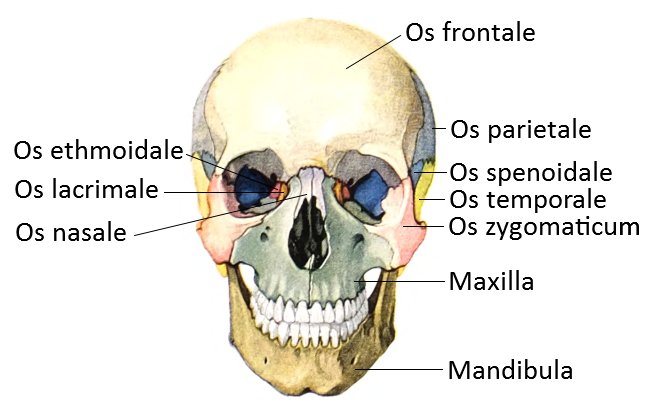
Cranium, from lateral

Cranium without mandible from caudal, prominent areas and insertions
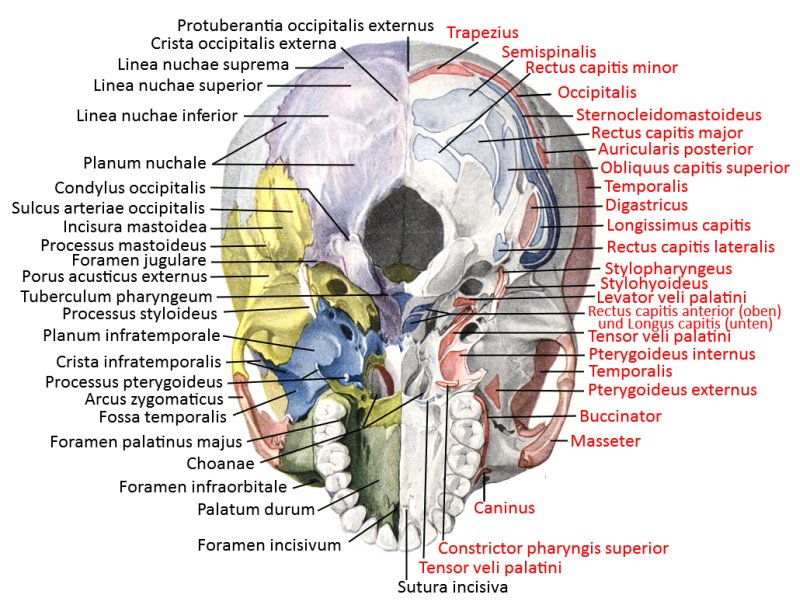
Cranium, from caudal, prominent areas

Facial muscles
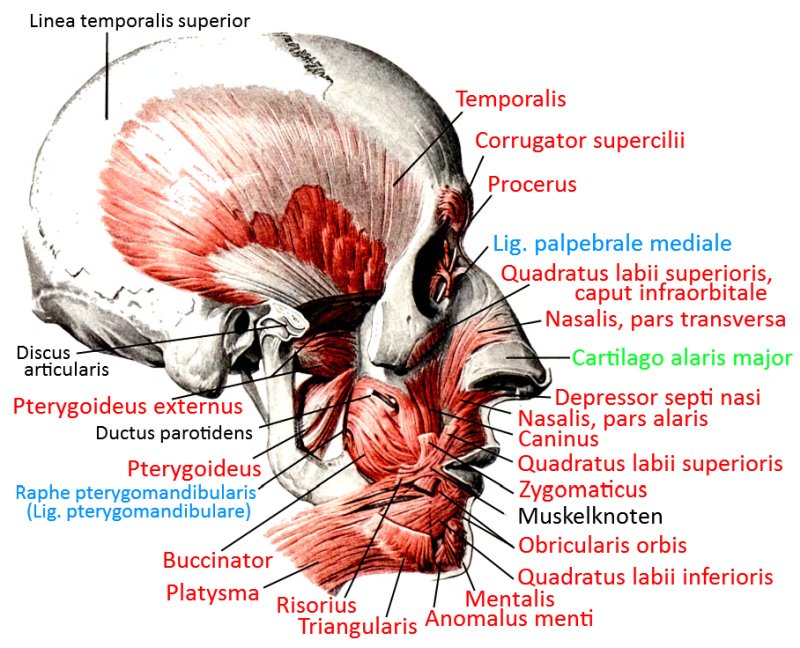
Cranium, muscle insertions

Cranium, muscles
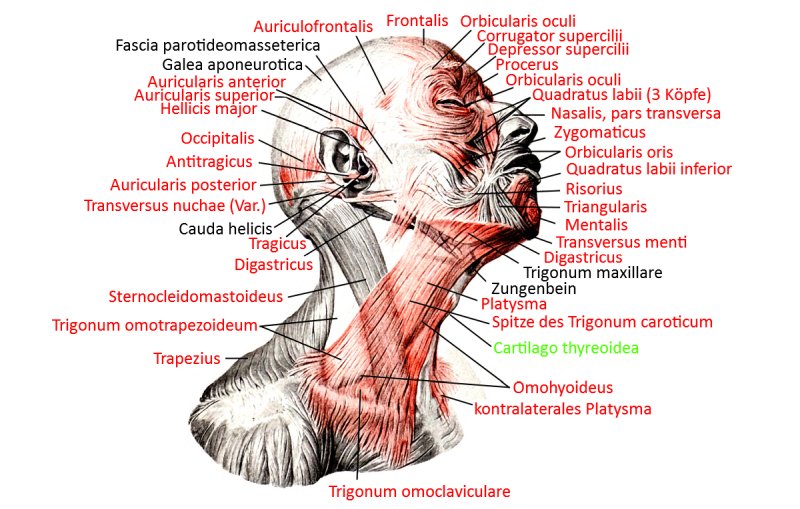
Cranium with mandibula, from caudal

Cranium, chewing
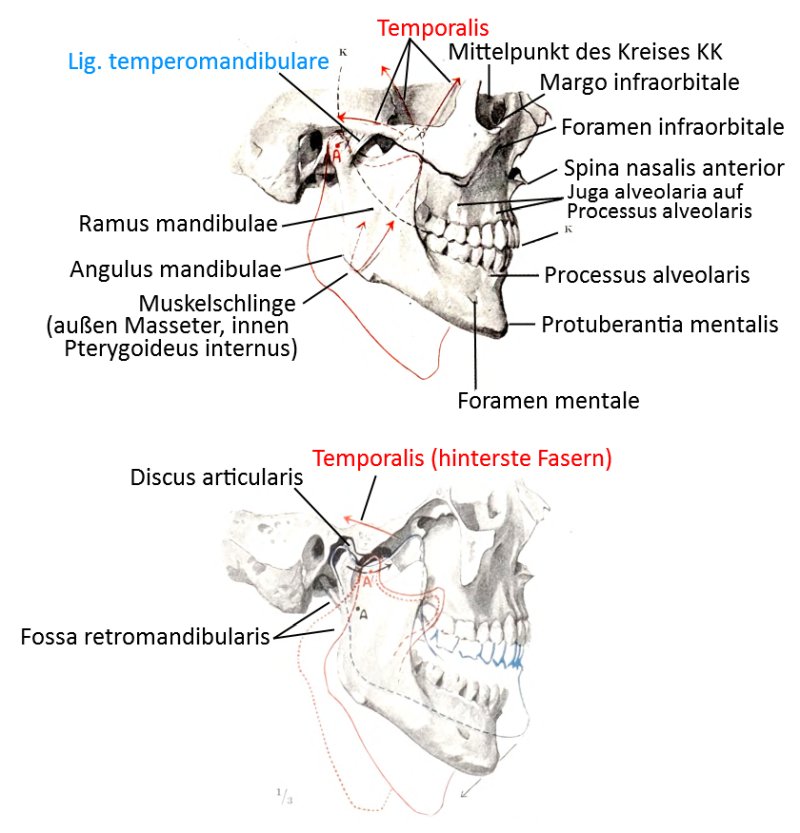
Cranium, palate and throat
